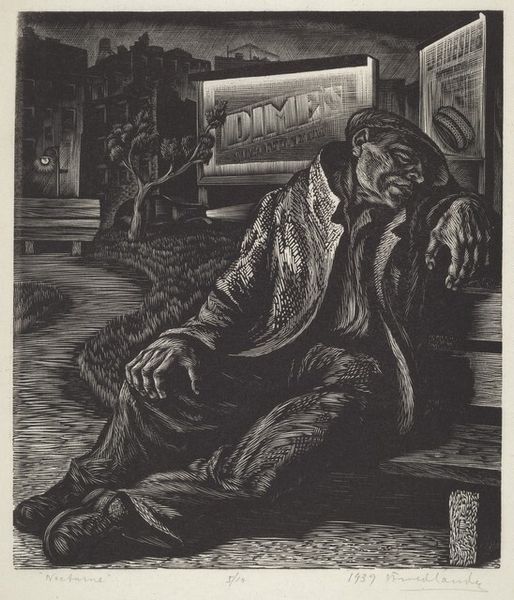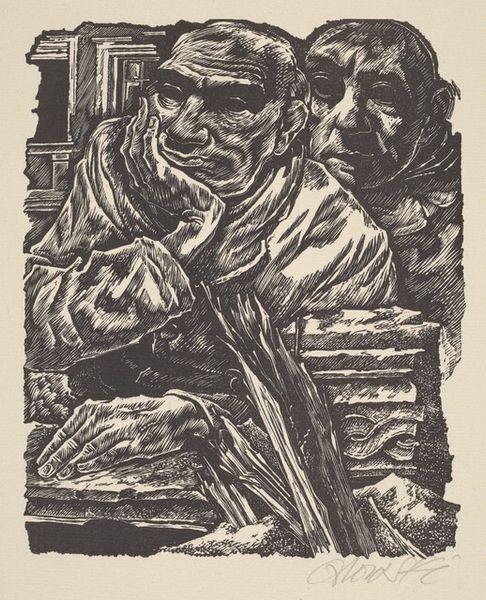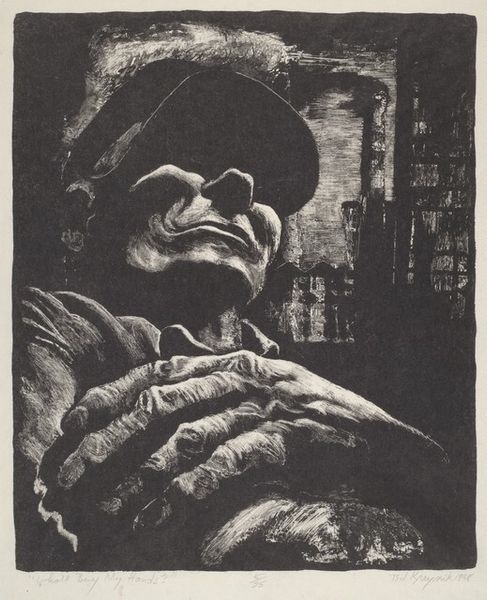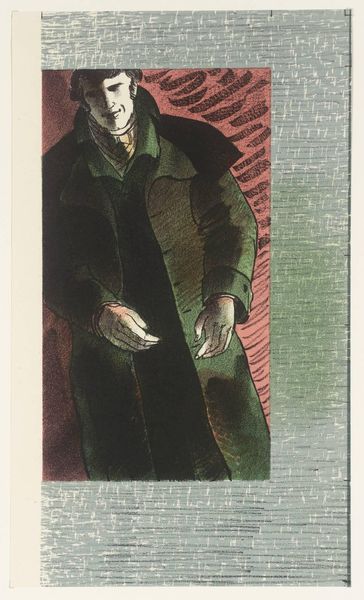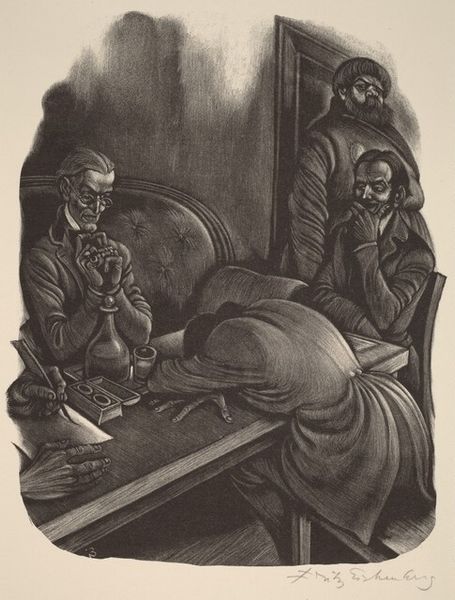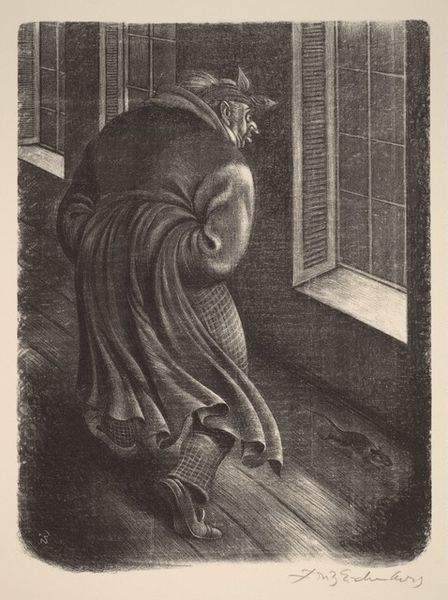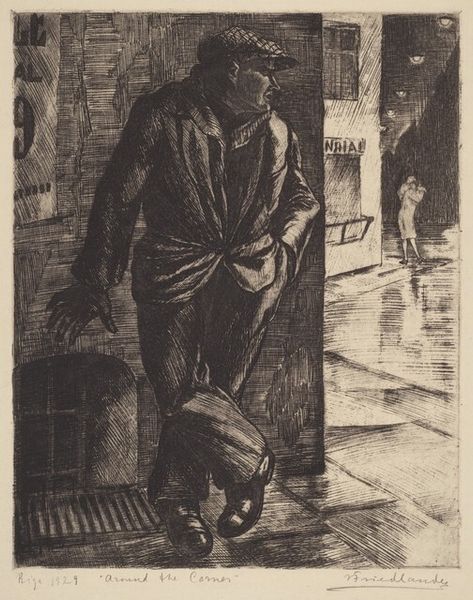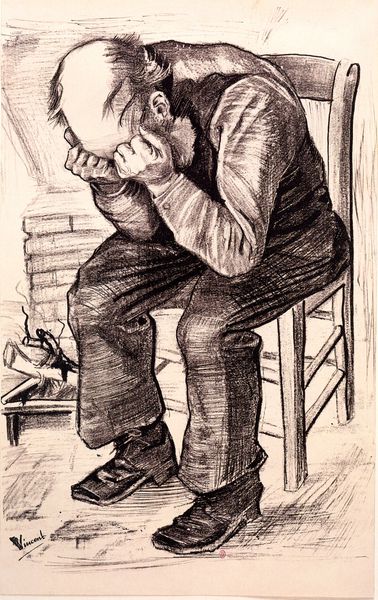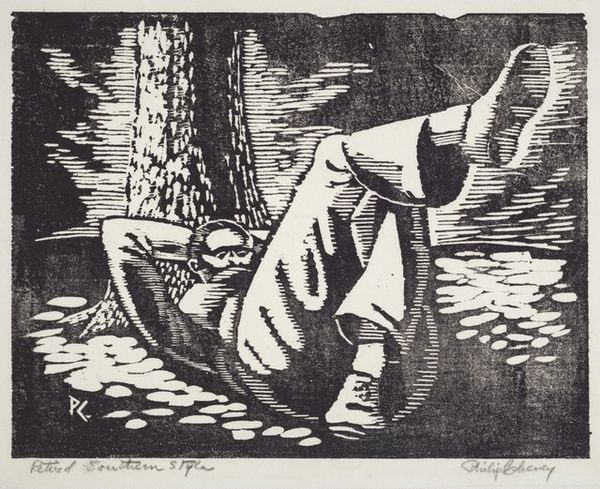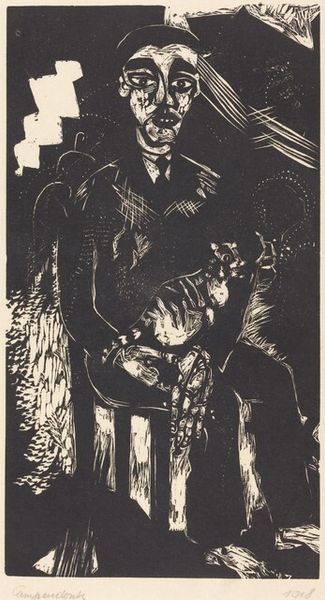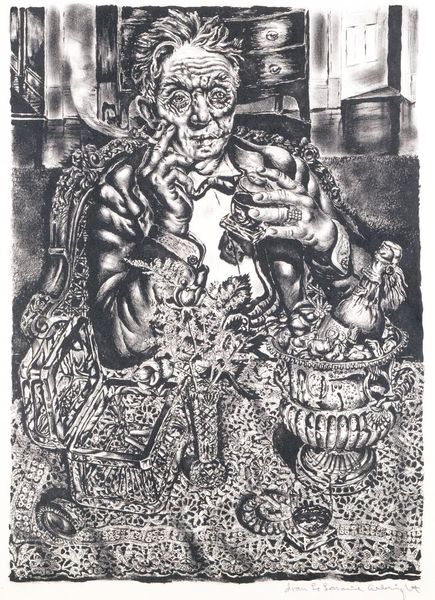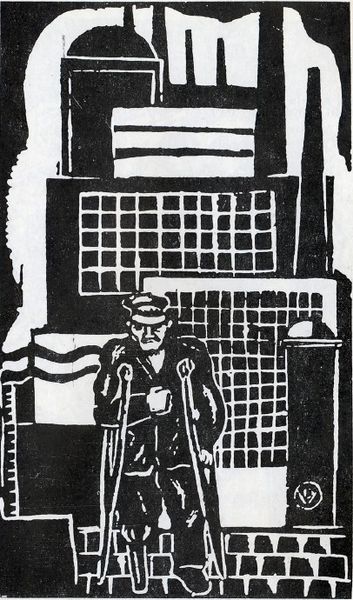
print, woodcut
#
portrait
# print
#
social-realism
#
woodcut
#
surrealism
#
genre-painting
#
realism
Dimensions: image: 380 x 355 mm sheet: 546 x 422 mm
Copyright: National Gallery of Art: CC0 1.0
Editor: "A Man's Castle," a woodcut print created by Bernard P. Schardt somewhere between 1935 and 1943. It definitely gives off a melancholic vibe with all its heavy lines and dark contrasts, don't you think? It depicts a man huddled up, almost trapped within this cramped interior. What strikes you most about this piece? Curator: Well, you're right, it's certainly not a party scene, is it? I find myself drawn to the *surreal* intimacy of the space. Schardt invites us into what seems like the most private of moments. The starkness of the woodcut emphasizes the textures—the rough fabric of his clothes, the wooden planks, that old stove... But look at his hands—clasped so tightly. I wonder what burdens he carries within his castle walls? Or maybe he is tinkering happily, unbothered, secure? Editor: That's an interesting take! I initially saw confinement, but you’re making me consider the possibility of contentment. I had thought this print depicted working-class life and hardships in the early 20th century, but I can also interpret it with nuances. What are the potential symbolic elements in play? Curator: Symbolism is in the eye of the beholder, isn't it? Though it could simply be what it is, what it seems! What did *you* mean, though? Tell me, what story does this 'castle' whisper to you? Editor: Maybe it is that our emotions and vulnerabilities can sometimes create our own confinement. Thanks! I hadn't considered how perspective changes the narrative completely. Curator: Precisely. And art, at its best, nudges us toward new ways of seeing and *feeling*. It opens a castle door into ourselves, perhaps!
Comments
No comments
Be the first to comment and join the conversation on the ultimate creative platform.
